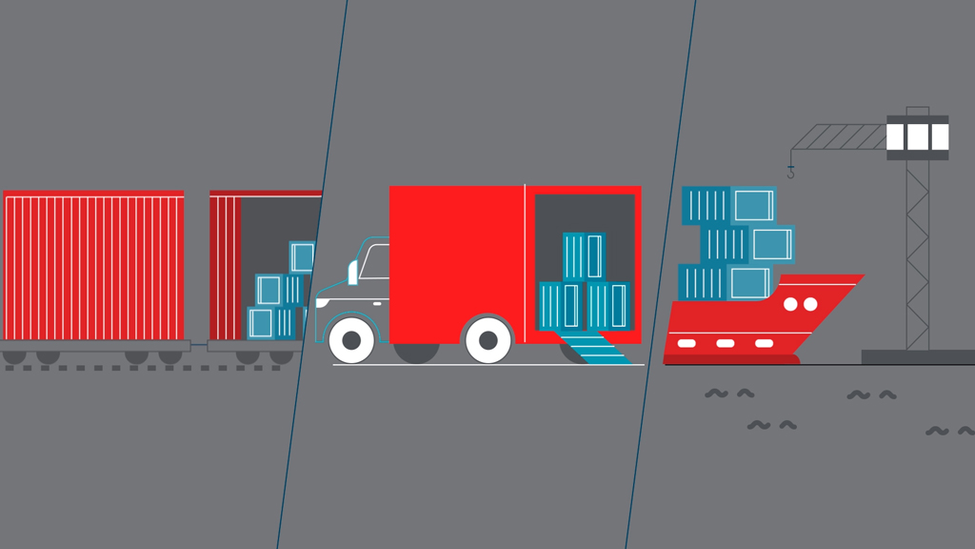5 Cargo Theft Tactics and How to Help Prevent Them

Travelers is proud to work with the finest Independent Agents

Cargo theft tactics are evolving. From food and beverages to high-end electronics, cargo thieves continue to target commodities that can be sold easily on the black market. Opportunistic thieves can make almost all goods fair game. Knowing emerging tactics can help businesses recognize their vulnerabilities and prevent potential cargo theft.
“There are some things about cargo theft that haven’t changed much over the years and there are many things that have changed significantly including new methods, targeted commodities, and the use of technology to commit cargo theft,” said Scott Cornell, Travelers Transportation Segment Lead, Crime and Theft specialist.
Here are five cargo theft tactics to watch, and some steps to help prevent cargo theft.
1. Straight cargo theft
Straight theft, where cargo is physically stolen from a location where it sits, remains a threat. Cargo thieves are looking for whatever they can steal and sell quickly. Think truck stops, parking lots, roadside parking, drop lots and other areas where cargo could be left unattended, especially in store parking lots or empty lots on weekends. Thieves may look for temperatures on refrigerated trucks that indicate the presence of pharmaceutical loads, candy or other types of desirable cargo. Trailers with little to no security deterrents are easier and likely targets.
To combat this common form of cargo theft shippers and carriers should take a layered approach to security over the road by using good policies and procedures. Policies such as:
- No unattended, loaded trailers, whenever possible; especially in high cargo theft areas.
- Use high security rear door locks and air cuff locks.
- If it is unavoidable to stage/drop a load, consider installing landing gear locks as well.
2. Strategic cargo theft
Strategic cargo theft, or theft that uses deceptive means, continues to evolve. This type of cargo theft can involve unconventional methods, including the use of fraud and deceptive information intended to trick shippers, brokers and carriers to give the load to the thieves instead of the legitimate carrier. Trends include identity theft, fictitious pick-ups, double brokering scams and fraudulent carriers as well as hybrid combinations of these methods used together to create even more confusion. Cargo thieves often look for loads being brokered late in the afternoon on Fridays in hopes that time constraints and deadlines will lend to mistakes and less stringent vetting of the carrier. Thieves may even generate false loads and post them to solicit bids in order to obtain the information they need to steal a company’s identity.
To avoid becoming a victim of strategic cargo theft, companies can employ strategies that will help ensure consistent and thorough vetting practices of any carrier or broker they do business with.
- Research contact information and company information thoroughly through FMSCA, Internet search engines, third party vetting companies as well as industry associations.
- Work closely with shippers to confirm positive identification of drivers at the point of pick-up, including driver information, identifying information on the truck and trailer being used, and the use of secure pick-up numbers.
Don’t hesitate to contact your customers and business partners if there is even the slightest question at any point in these processes. Often the additional scrutiny will deter thieves from pursuing the load in question.
3. Technology
Some cargo thieves are using “sniffers,” devices that help detect covert GPS technology, even those embedded within a trailer. Once a device is detected, they then use a GPS jammer to block that technology so it can’t be used to help law enforcement locate stolen goods. Others stage stolen loads in a parking lot immediately after the theft and wait to see if law enforcement will come in search of it.
4. Cyber
Basic types of cyber-attacks are being used to aid in committing cargo theft. Phishing emails may be sent in an attempt to install Trojan Horse malware that can infect a company's system and grant access to sensitive data. This may allow cargo thieves access to pick up and delivery information, which they can use to print out copies of paperwork to commit fictitious pick-ups.
Implementing strong cyber security can help recognize and prevent many of these attacks. Companies should closely examine their websites and the information they make available to the public. Consider items such as:
- Is contact information for key people important to show or would a common contact be sufficient?
- Are you identifying current customers and/or referencing specific products handled?
“Protecting your online profile can be as important as securing the perimeter of your operations,” said Cornell.
5. Pilferage
Better industry reporting in recent years has led to greater acknowledgment of pilferage issues. “It’s become more apparent in recent years, but pilferage has always been the larger part of the iceberg just below the surface,” explains Cornell. “There’s often a lag in detection that there has even been a theft because the drivers may not realize it until they reach the point of delivery, after making multiple stops along the route. As a result, police may be reluctant to file a report if the driver is unsure of where the theft occurred.”
Companies should require drivers to complete walk around inspections of their trucks after every stop to check trailer doors and seals to identify signs of theft. The use of high-security rear door locks or even high-quality pad locks can deter this type of theft.
Travelers monitors and tracks cargo thefts around the country through its Special Investigations Group (SIG). Collecting and synthesizing theft data is critical to helping customers identify and avoid theft-prone routes. It is also very useful when assisting local law enforcement in identifying high-risk areas and locating stolen goods.
Taking steps to prevent cargo theft
Cornell suggests that fleet operators practice a layered approach to cargo security, starting with the development of internal processes and procedures. Then include regular training and awareness events for employees throughout the year.
"Everyone from drivers to warehouse workers should be trained to recognize, prevent and report cargo theft techniques," Cornell said.
The following are features of a layered cargo security program:
- Company security processes and procedures,
- Usage of hard security devices, such as locks and seals,
- Leveraging appropriate technology,
- Reinforcing cyber-security to prevent access to key information.



